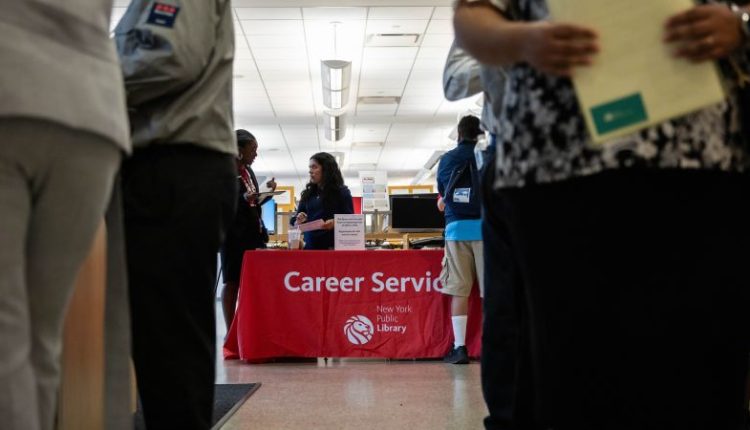For much of the last two years, the 2-year US Treasury yield has traded above the 10-year yield. When that happens, it historically has meant a recession is looming. So you’d think that investors and economists would have celebrated last week when that warning sign stopped flashing.
Yet red flags are now being raised over the fact that Treasury yields are moving back in a direction that’s considered “normal.” (Yes, you read that correctly.)
When the 2-year Treasury yield trades above the 10-year, it’s a phenomenon known as an inverted yield curve, meaning investors see the more immediate future as more of a risk than farther out. That’s because, when risks are elevated, investors will demand a higher payout, or yield, to invest in US Treasury notes.
After Friday’s jobs report, which showed the unemployment rate edged down slightly in August and employers continued to hire fewer workers compared to the prior years, the 2-year yield fell below the 10-year, resulting in an “uninverted” yield curve. But that inflection point didn’t happen suddenly. The expectation of lower rates, which investors have been pricing in for months now, have caused shorter-duration yields like the 2-year to move down.
The jobs report, along with the release of mostly positive August inflation data this week, added more certainty that the Federal Reserve will start cutting interest rates at its meeting next week — and also raised the likelihood of further cuts at later meetings this year.
But there’s a problem with that. When the yield curve, which is the difference between the 10-year and the 2-year, turns positive, or uninverts, right before the Fed starts cutting interest rates, a recession tends to kick in not long afterward.
For instance, when the yield curve turned positive in December 2000, the Fed cut interest rates a month later. Two months after that, a recession began. A similar sequence of events happened in the lead-up to the Great Recession.
Still, there are plenty of instances when the yield curve uninverted and a recession wasn’t right around the corner. The most recent prior case of the yield curve uninverting was September 2019. Shortly after that happened, the Fed cut rates, but there wasn’t any recession until February 2020.
That’s why Marco Giacoletti, a finance and economics professor at the University of Southern California Marshall School of Business, said he takes the dis-inverted yield curve as “just one of the many signals of future economic activity available to economists.”
“I certainly would not dismiss the ‘disinversion’ of the yield curve,” Kristina Hooper, chief global market strategist at Invesco, told CNN. (Disinversion and uninversion are both used to refer to a yield curve that returns to being in positive territory.) But Hooper is not especially concerned about an imminent recession as a result.
One reason she isn’t on edge is because the yield curve was inverted for a much longer stretch of time compared to other recent recessions. Therefore, the uninversion could be signaling a recession that’s farther out than what it used to signal.
Additionally, there’s so much driving yield movements, including the government having to auction off a lot more debt to finance its spending, that has nothing to do with recession expectations, Hooper said. “So it’s hard to say that we absolutely believe this is going to happen exactly the way it’s happened historically.”
Kevin Flanagan, head of fixed income strategy at WisdomTree, said he’s paying much closer attention to labor market indicators for signs of a possible recession than the yield curve. “The labor market numbers are cooling, but they’re not weak. They’re not falling off a cliff.”
Still, the unemployment rate has risen high enough to trigger a separate recession predictor known as the “Sahm rule.” Named after economist Claudia Sahm who developed it, the rule posits that whenever the unemployment rate as a three-month average rises 0.5 percentage points from the lowest point in the past 12 months, a recession is imminent.
But Sahm herself said her rule was “meant to be broken,” and that it’s unlikely the US economy is on the verge of a recession right now.
One source of optimism for Flanagan is the four-week moving average of initial jobless claims, which is currently trending far below levels seen leading up to prior recessions, aside from the pandemic.
“That’s a better way of looking at things,” he told CNN.
Read the full article here

